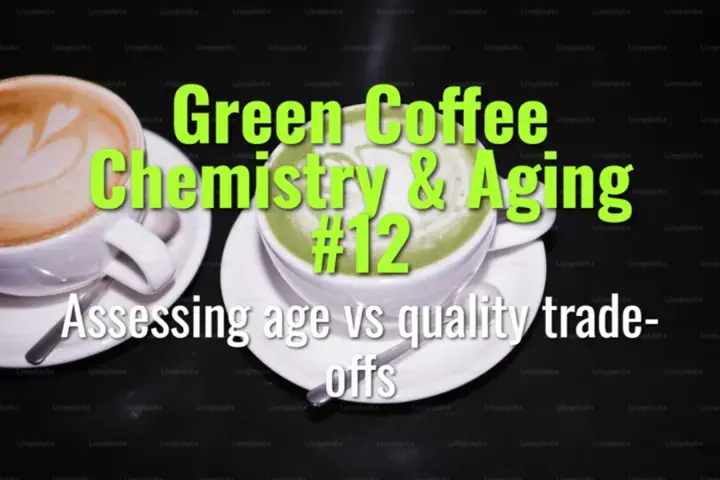Assessing age vs quality trade-offs
This topic explains how to evaluate the trade-offs between the age of green coffee and its quality, how storage conditions influence these trade-offs, and how buyers and roasters make decisions about usability and value.
- Coffee Basics Nerds
- 2 min read
Article 12 of 12 in Green Coffee Chemistry & Aging/

Why Age Matters
- Green coffee undergoes chemical and physical changes over time.
- Freshness strongly linked to vibrancy, acidity, and sweetness.
- With age, staling pathways (oxidation, acid loss, lipid rancidity) reduce cup quality.
Shelf Life Benchmarks
- 0–6 months: Optimal freshness, full flavor potential.
- 6–12 months: Gradual decline in acidity, sweetness, and aromatics.
- 12+ months: Noticeable sensory defects (papery, woody, flat).
- Exceptional storage (hermetic + climate control) can extend usability up to 18+ months.
Trade-Off Considerations
Quality
- High-scoring specialty lots lose premiums faster with age.
- Commodity-grade coffees may tolerate longer storage with less market penalty.
Market Value
- Fresh lots fetch higher premiums.
- Aged lots often discounted, blended, or relegated to commercial markets.
Storage Costs
- Extending shelf life requires hermetic bags, climate-controlled warehouses → adds costs.
- Roasters weigh storage investment vs potential flavor decline.
Risk Management
- Holding lots too long risks rejection by specialty buyers.
- Selling earlier secures revenue but may miss higher market prices.
Assessment Tools
- Cupping: Regular sensory evaluation of stored lots.
- Moisture & a-w testing: Detects changes in stability.
- Record keeping: Track harvest date, storage conditions, and cupping results.
Decision Framework
- Specialty buyers: Prioritize freshness, often demand <12 months old.
- Commercial buyers: More tolerant; prioritize volume and price over vibrancy.
- Producers/exporters: Must balance time to market with maintaining quality.
Best Practices
- Establish maximum age limits for different market segments.
- Communicate transparently with buyers about harvest dates and storage methods.
- Use aged lots strategically in blends to reduce waste.
Lasting Importance
Assessing age vs quality trade-offs is essential for managing both flavor integrity and economic value. By monitoring coffee carefully and aligning with buyer expectations, stakeholders can make informed decisions that protect both cup quality and profitability.
You might also like:
- Tags:
- Lasting Importance
- Green Coffee
- Best Practices
- Cup Quality
- Shelf Life
- Specialty Buyers
- Acidity Sweetness
- Sensory Evaluation
- Flavor Integrity
- Market Value
- Risk Management
- Storage Conditions
- Producers Exporters
- Record Keeping
- Specialty Lots
- Flavor Potential
- Hermetic Bags
- Trade Offs
- Cupping Results
- Higher Premiums
- Harvest Date
- Commercial Markets
- Climate Control